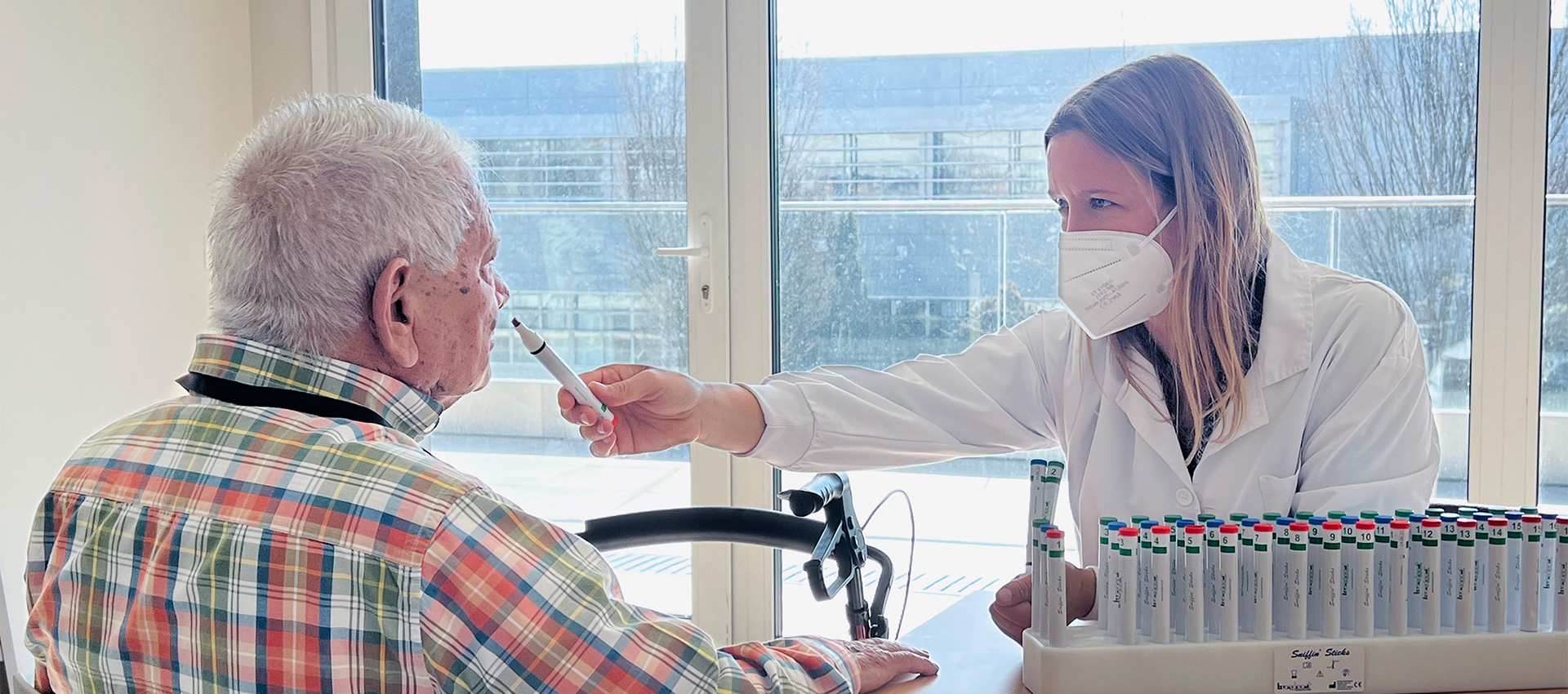
Navarrabiomed launches an olfactory protocol to advance in the detection and early diagnosis of neurodegenerative diseases
Today work is starting with an experimental group of 60 people to demonstrate that intensive olfactory training can, in addition to improving olfactory function, cause positive changes in the structure of the olfactory processing areas of the brain.
After celebrating yesterday, February 27th, the Anosmia Awareness Day, the research units from Clinical neuroproteomics and Geriatrics at Navarrabiomed have launched, in collaboration with the University Hospital of Navarra (HUN), a study to examine the effects of a controlled and supervised olfactory training program for olfactory function, and to better understand the relationship between smell, the immune system and brain function. The experimental olfactory training group is composed of 60 seniors from nursing homes and is part of a larger characterization study that seeks to advance in the early detection and diagnosis of neurodegenerative diseases. This group will undergo a first comprehensive assessment at the beginning of the study and a second one after 12 weeks of training. Today, work has begun at the Bidealde social and health centre, one of the participating nursing homes, thanks to the collaboration of Dr. Gloria Sanjurjo.
Olfactory function plays an important role in human life and regulates mechanisms such as food intake as well as emotional and social and reproductive behavioural responses. Accordingly, people with olfactory disorders may have daily problems related to personal hygiene, safety, sexual behaviour and food intake.
Training and repeated exposure to odorants leads to increased olfactory sensitivity. Olfactory or odour training is a non-invasive technique without significant side effects. It can be considered a simple protocol, which has proven its effectiveness in some patients with olfactory dysfunction.
In older patients, olfactory dysfunction can decrease appetite, lowering food intake and consequently increasing malnutrition and accelerating the loss of muscle mass. Beyond the risks that the loss of smell can imply for the elderly and the resulting deterioration of quality of life, several researches show that smell deficits are among the most common non-motor symptoms of neurodegenerative diseases such as Parkinson's (PD) or Alzheimer's1 and they can be detected early in comparison with motor symptoms. In addition, dysfunctions of the olfactory system related to immune system disorders have been reported, suggesting that olfactory system irregularities may also be associated with the immune system.
Olfactory protocol: 180 people in 3 different groups
The training will take place over a period of 12 weeks. Participants will be exposed once a day to four different representative scents of the primary scents (fragrant or floral, rose; woody or resinous, eucalyptus; citrus, lemon and aromatic clove). All jars will be labelled with the name of the scent. They will be asked to smell each in the morning for about 20 s.
To obtain a complete characterization, in addition to the 60 people who are part of the experimental olfactory training group, the control group also consists of 60 patients hospitalized at the HUN with acute illness and 60 outpatients also from the HUN.
INNOLFACT: Olfactory proteomics to diagnose and develop new therapies
This research is part of the Innolfact project, led by Navarrabiomed and financed by the Government of Navarra through the call for Aid for strategic R&D projects 2020-2022.
Over the past few years, olfactory proteomics has been postulated as a powerful approach to characterize the global dynamics of the proteome in order to unravel the modulation of cell signalling networks during odour processing, as well as during the neurodegenerative process.
Therefore, it is greatly important to characterize the proteome of the olfactory epithelium cells, both at the beginning of treatment and at the end, and the relationship with the immune system. In this way, if the data obtained for geriatrics and proteomics are correlated, in the future, immunotherapeutic approaches could be proposed as a treatment for people with this olfactory deficit. This study will also be done by sexes, since preliminary results indicate that protein expression varies between men and women.
1. Djordjevic et al., 2008; Haehner et al., 2013; Knudsen et al., 2015; Doty, 2017;Marin et al., 2018; Kondo et al., 2020), and COVID-19 (Moein et al., 2020; Sedaghat et al., 2020).

